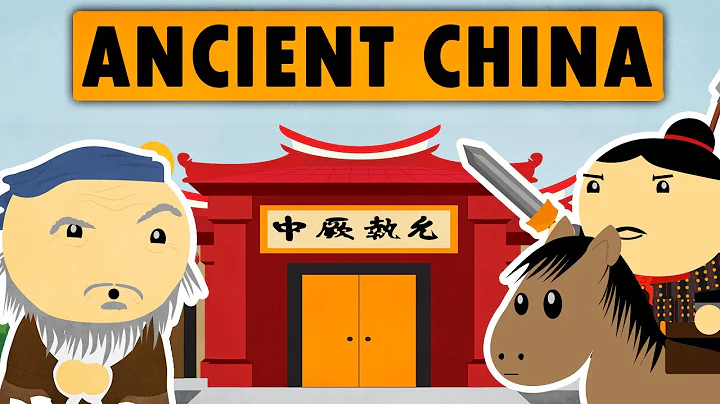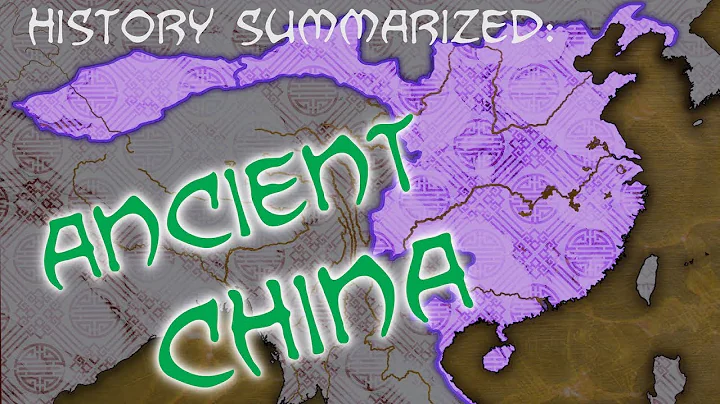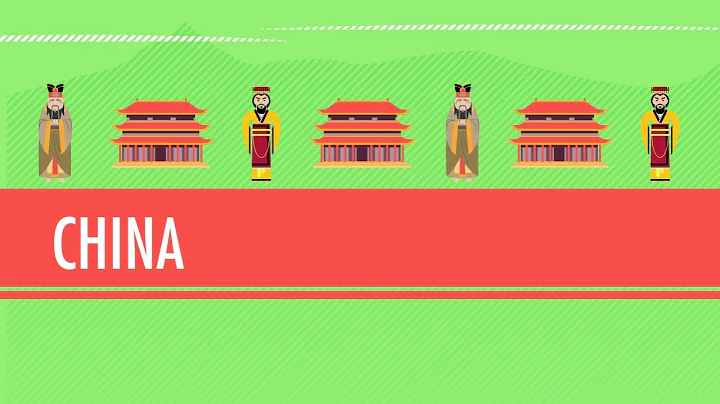In midsummer, at the invitation of a friend, I went to Yulin, Guangxi with Shu Ming and Wei Min. Yulin Ancient County is one of the nine Lingnan counties named by Emperor Wu of the Han Dynasty. It is the same as the three counties of Jiaozhi. At night, I read the book "General History of the World" edited by the famous historian Mr. Zhou Liang. The modern history part talks about the relationship between China and other countries in the world. There is the following record: " Leizhou native Mo Jiu first invested in Cambodia, Later, he entered Vietnam , gathered people to cultivate in the desolate coastal areas, and established Haxian City, which became an important port in Nanqi. Mo Jiu and his son successively served as commander-in-chief under the King of Guangnan..."
In 1984, Leizhou was starting to compile "Leizhou Local Chronicles." ", its person in charge Wang Zengquan wrote to Zhou Liang on November 1 of the same year, saying: We believe that the person named in "General History of the World" is not an ordinary person, and we plan to conduct research on Mo Jiu, but we suffer from lack of information at hand. , “Who is this Leizhou native Mo Jiu?” Zhou Yiliang returned to Beijing from a business trip in December of that year. After seeing Wang Zengquan's letter, he replied on December 13: "Mo Jiu from Leizhou went to Vietnam and served as a minister of Ha Xian. This can be seen in the Vietnamese history written in Chinese "Da Nan Shi Lu". I would like to inform you. ""Da Nam Records" is the most important official history book during the Nguyen Dynasty in Vietnam, and the authenticity of its historical materials should be trustworthy.
I went to Ha Tien, Vietnam in March and saw the Mo Gong Temple, the Mo family cemetery and the government office ruins. I was shocked by the achievements of the three generations of the Mo family in Ha Tien . At that time, I wanted to visit Mo’s hometown after returning to the country. It's only four to five hundred kilometers from Guangzhou to Leizhou, and I can fulfill my long-cherished wish. Soon after returning to Guangzhou from Yulin , I hurried to Leizhou.
Leizhou Peninsula is located at the southernmost tip of mainland China, across the sea from Hainan Island. Xuwen Port on the peninsula (now known as Hai'an Port ) has been the main port to Hainan, Annan and even Southeast Asia since the Qin and Han Dynasties. Dongling Village, Baisha Town, Leizhou City, Mo Mei's hometown, is located in the hinterland of the peninsula, 5 kilometers from Leizhou Fucheng to the north and less than 40 kilometers from Hai'an Port to the south. There are fishing ports not far away on the east and west sides of the village, making the transportation very convenient.

Moshi Ancestral Hall
We exited from the Leizhou exit of the highway. Under the guidance of our friend Xiao Liu, we first went to Baisha Town , then went west for about 2 kilometers, passed two villages, turned south, and then walked 1 kilometer into the countryside. Highway, arrive at Dongling Village.
The terrain outside the village is flat, with rice fields connected vertically and horizontally, making it very open. The south of the village is adjacent to the Nandu River , and the tributary Jiuqu Gang River surrounds the village. The water flow is slow and does not dry up all year round. It was an important port channel for water transportation during the Ming and Qing Dynasties. It is now used for drainage and irrigation in Dongling and several surrounding villages. The terrain in the north and west of the village is undulating. The northern slope of the village is called Fei'e Mountain, which extends from south to north and is connected by four hills for three or four miles. The trees here are lush and provide shade and air, suitable for dry farming, greening or burials. The village is built just below the slope.
Such an extraordinary place was chosen by Mo Yu, the founder of Leizhou Mo family.
Mo Yugong, whose ancestral home is Fujian, was born in the fourth year of Emperor Xianzong of the Yuan Dynasty (1255). He was a Jinshi during the Yanyou period of the Yuan Dynasty (1314). In 1321, he was demoted to Leizhou by Yuan Yingzong and was given the title of "government official". It can be said that he had a bad fate.
Moyu was loyal to his duties when he was in Leizhou, gave alms to the people, and did many good deeds. He originally settled in the east ridge of Sanyuan Pagoda in the city. One day, he dreamed that a swan took him flying west and saw a pomegranate garden with beautiful scenery. Lingcun to commemorate his first residence in Leizhou.
We met the village chief Mo Wenhai at the entrance of the village. He is muscular, hospitable and talkative. He is in his 40s and exudes the air of a mature man. He said that the Mo family in Leizhou has been in existence for more than 20 generations since its founding in the 14th century. I am a descendant of the 23rd generation. The entire clan has a population of nearly 50,000. Most of them live in Dongling Village and surrounding villages. More than 6,000 people immigrated overseas, mostly from Cambodia, Vietnam, and Thailand. The population of Dongling Village is all descendants of the Mo family, with more than 4,500 people. After the reform and opening up, many people went out to study, work, or moved to the county town and Zhanjiang, leaving less than 2,000 people who stayed behind for a long time.
Dongling Village is divided into two parts: the old village and the new village. The old villages are located inside, while the new villages are built around the villages, most of which are newly built two-story buildings. The village chief took us to visit the old village.Walking along the ancient alley, which is more than 500 meters long and paved with bluestone slabs, you will see ancient dwellings from the Ming and Qing Dynasties lined up in rows.
These antique houses are similar in style to the "Minnan Houses" in Fujian, with red tile roofs, blue brick walls, brick and wood structures, double eaves and curved corners, and many decorations. Although they have been eroded by hundreds of years of vicissitudes of life, these courtyards, which are like courtyards, are still well preserved and have not lost their former style and splendor. Not only are the gray plastic graphics on the eaves and top corners clearly visible, but the flowers, plants, figures and wishful-looking paintings on the walls are still colorful. What is particularly rare is that there are military facilities to defend against bandits built around the ancient village. Gates, gun towers, bunkers, and forts are well-proportioned and integrated. Village Chief Mo said: "There are still 20 well-preserved ancient houses, covering an area of more than 6,000 square meters. Most of them are still inhabited."
To the south of the old village is the Mo family ancestral hall. The ancestral temple faces south and covers an area of more than 1,300 square meters, with a width of more than 20 meters and a depth of more than 60 meters. It has a four-bay courtyard layout. There was originally an archway in front of the hospital, with two plaques on it: Ming Dynasty Minister of Rites Wang Honghai inscribed "Yuan Yuan Liu Fang" and Leizhou Junyan Ke Shi's inscription "Yi Shi Yi Guan". There are 8 stone tablets erected behind the archway, each of which is engraved with the names and information of the tribesmen who obtained the title before the Wanli year of the Ming Dynasty. Fortunately, when the archway was destroyed, the plaques and tablets were collected by the tribesmen and were not lost. It can still be inlaid when it is renovated.

The preserved monument of "Yuan Yuan Liu Fang"

The main structure of the ancestral hall has been repaired
The main structure of the ancestral hall has been repaired and is being painted. The five-bay hall is open and solemn; the second entrance hall is the Kuixing Tower, which is erected on the top of the hall and has a unique shape; the rear entrance hall is supported by iron wood pillars and has a lifting-beam beam structure, which is a typical Ming Dynasty Architectural style. The ancestral hall is famous in western Guangdong for its rigorous structure and grand scenes. During the Ming and Qing Dynasties, it was used as an examination room for the imperial examinations of Leizhou Prefecture or Haikang County many times.

Leimai Chen Sandian Palace
The "Moshi Ancestral Hall" in Dongling Village is the main ancestral hall of the Moshi clan in the entire Leizhou area. It was first built in the seventh year of Hongzhi (1494) in the Ming Dynasty. What is remarkable about this ancestral hall is that the main components of the entire ancestral hall were transported by land and sea from Fujian. It can be described as a unique ingenuity. You can also imagine the great determination and strong cohesion of the Mo family. At that time, when Mo Qing, the leader of the village, was the magistrate of Changtai County, Zhangzhou Prefecture, Fujian, he designed the design according to the actual sample of the county government. The iron and wood beams, trusses, columns, stone railings, stone tablets and other materials needed to build the ancestral hall were all made in Fujian. The real parts are made into finished products, and then they are transported to Zhangzhou Yuegang under supervision. They cross the South China Sea by sea ship and are transported to Leizhou Haian via the Beibu Gulf. They are installed and built in the village.
Dongling Village has a long history, culture and etiquette, and numerous talents. It is a legendary village. According to the records of "Mo Family Genealogy", Leizhou Chronicles and "Guangdong University Chronicles", from the Yuan Dynasty to the Qing Dynasty, Dongling Village produced more than 30 Jinshi, Juren, Gongsheng, etc., and eight of them were awarded There are more than 20 people with grades or above. This kind of prosperous writing style is indeed not easy for a mountain village located in a remote and barbaric place. Even in a developed place like the Pearl River Delta, it is rare to achieve such "Yi Shi Yi Yi" achievements. In addition to Jizu Mo and Gong, the most famous descendants of the Mo family in history are Mo Tiantian of the twelfth generation and Mo Jiu of the fourteenth generation.
Let’s talk about talent first. The Duke was a Jinshi of during the Jiajing period of the Ming Dynasty, and was first appointed as the magistrate of Putian County, Fujian Province. During his tenure, he joined forces with Qi Jiguang, the general of the same name, at the mouth of the Hanjiang River in Putian to fight against the Japanese, and achieved brilliant results. A temple was built and statues of the two heroes were placed together in this temple to be worshiped all year round. Later, Mo was promoted to the prefect of Dali Prefecture in Yunnan due to his meritorious service. He dared to take charge of his duties, loved the people and cared for the barbarians, and opened the treasury to provide relief to the victims of ethnic minorities. One of the famous Xunli officials in Yunnan history.In the second year of Wanli , he was promoted to the Youjiang Military Prefecture in Guangxi and guarded southern Xinjiang for seven years. He was a prominent political figure and was named the "No. 1 Scholar" by the imperial court. When he left his post, the people of Guangxi were arranged along the way from Baise to Yulin and Bobai . Fruits and tea were given to each other, and Mo Tiantian Temple was built in Baise. Later, when he was appointed as the Assistant Minister of the Ministry of Punishment in Nanjing, Mo Tiantian went home to visit his parents, but he fell ill and died in Leizhou.
Let’s talk about the famous Mo Jiu. The head of Wenhai Village said that Mr. Jiu and Mr. Tianzi belonged to the sixth branch of the Mo family in Dongling. In terms of seniority, Mr. Jiu was the grandson of Mr. Tianzi. Mo Tianran, the brother of Tian Tian Gong, was known as "Bao Fu". He was a Confucian official with the highest honors. He was good at doing business and worked hard to get rich. He was one of the eight richest men in Guangdong at that time. Both of these two people had an important influence on Mo Jiu. Jiu Gong was talented and intelligent since he was a child. Although his family was poor due to the war and he had no time to study, he had the courage to take on tasks and had great ambitions. He became a hero against the Qing Dynasty in Baisha area when he was young.

Lei Zu Temple (photo by Hu Weimin)
Wen Hai also said that Mo Jiu’s father, Mo Shiping, is also a local celebrity. The Mo family is related to the late Ming Dynasty official Chen Shangchuan . Jiu Gong gave birth to a boy, Mo Tianci, and a girl named Jin Ding. The girl married Chen Dading, the son of General Chen Shangchuan.
I asked: "There are many opinions on the time when Mo Jiu went to Chenla (today's Cambodia) in the history books. One said it was 1671 and the other said it was 1680. Which year do you think it was?" Wenhai replied: "According to the memories of the old man Murakami. Jiu Gong’s voyage to Nanyang should be after Chen Shangchuan went to Guangnan, and historical records record that Chen Shangchuan and Yang Diqiu led three thousand of their descendants from Gao, Lei and Qin to Guangnan in 1679. The king of Guangnan praised their loyalty and bravery and allowed them to develop Shuizhenla ( area in present-day South Vietnam. Since Jiu Gong’s move southward was inspired by the two generals Chen and Yang, the logical reasoning is that it is credible in 1680. “
I think that Mo Jiu’s move southward also involved Mo Jiu’s expedition to Nanyang. The motive can also prove the time when Mo Jiu went south. Chen Shangchuan went to school in Zhaoqing, Guangdong in 1642. In 1646, King of Gui Zhu Youlang established the Yongli small court to resist the Qing Dynasty with the support of Lingnan ministers. Chen participated in the Yongli regime's struggle against the Qing Dynasty; in 1662, Zheng Chenggong recovered Taiwan from the Dutch colonists, established the Ming Dynasty regime, and appointed Chen Shangchuan, who supported the anti-Qing Dynasty, as the commander-in-chief of the three states of Gao, Lian, and Lei. Empress Chen once led her troops to attack Qinzhou, defeated the Qing soldiers who followed them, occupied Qinzhou Bay, cruised the South China Sea from time to time, entered and exited Tokyo Bay, Guangnan and Khmer ports, and cooperated with " The Wu Sangui department under the banner of "Fu Ming" carried out military operations in Guangdong, Guangxi and .
After the "San Francisco Rebellion" was put down in 1679, Chen Shangchuan saw that there was no hope of rebelling against the Qing Dynasty and restoring the Ming Dynasty, so he went to Annan together with Yang Yandi, the commander-in-chief of Longmen. Mo Jiu participated in the rebel movement against the Qing Dynasty at a very young age and became the leader of the Baisha area. The pacification of San Francisco in 1679 was a turning point. Since then, anti-Qing activities have gradually subsided. In the second year, following the footsteps of General Chen and Yang, Mo Jiu led his people to "cross the sea and visit the Zhenla Kingdom as guests" "because they could not bear the chaos caused by the barbarian intrusion". This can be regarded as a helpless act after the defeat of Zhongliang. Lifting is also a wise move to maintain integrity and find new ways.
Comparison table of Vietnamese dynasties and Chinese dynasties
Vietnamese dynasties | Existence time | Chinese dynasties |
Ding Dynasty | 968-980 years | Northern Song |
Former Li Dynasty | 980-1009 | Taiping Xingguo Six years |
Li Dynasty | 1010-1225 | Northern Song Dynasty 5 |
Chen Dynasty | 1225-1400 years | Southern Song, Yuan and Ming Dynasties |
Hu Dynasty | 1400-1407 years | Ming Dynasty |
Hou Li Dynasty | 1428-1778 years | Ming Dynasty, Qing Dynasty |
Mo Dynasty | 1527-1593 years | |
Hou Li Dynasty Zheng Zhu | 1593-1787 | |
Hou Le Dynasty Nguyen Lord | 1558-1778 | |
Xishan Dynasty | 1789-1802 | Qing Chao |
Ruan Chao | 1802-1945 | Qing Dynasty |
Notes: 1. The time when China governed the Jiaozhi (Jiaozhou, Annan) area It lasted for 1182 years, that is, from 214 BC to 968 AD. Vietnamese history calls this period of history the "Northern Period". This period can be divided into five periods: Xiang County , Nanyue Kingdom , the Han Dynasty (Jiaozhi, Jiuzhen, and Rinan counties), Jiaozhou from Soochow to the Two Jin Southern Dynasties, and Annan during the Sui and Tang Dynasties.
2. The French colonial period lasted from 1884 to 1945, during which Japan occupied Vietnam from 1940 to 1945.
3. On September 2, 1945, northern Vietnam established the Democratic Republic of Vietnam . On July 2, 1976, the north and the south were unified and the country was renamed the Socialist Republic of Vietnam.
4. From 1954 to 1975, South Vietnam, also known as the Republic of Vietnam, was divided into periods of rule of law and rule of beauty.

author





















